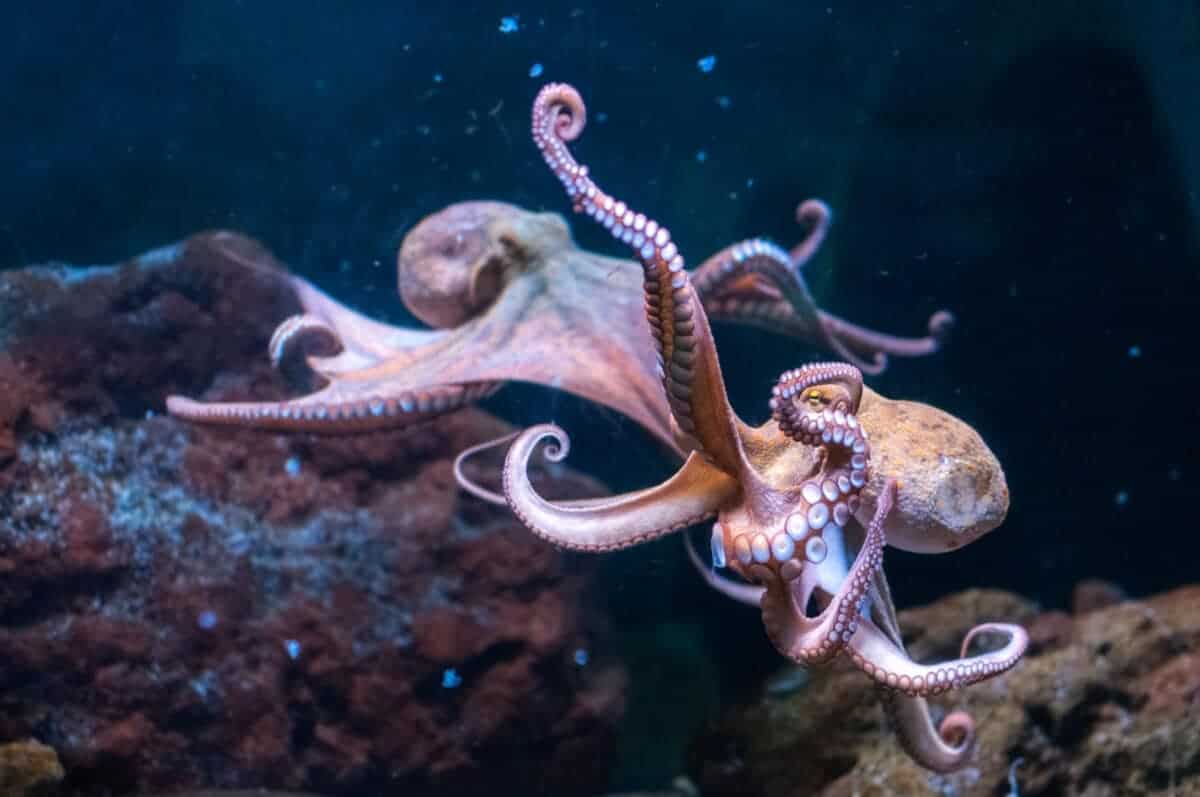In the mesmerizing depths of the ocean, among the kaleidoscope of marine life, resides a creature that stands out not for its vibrant colors or majestic size, but for its unparalleled ability to vanish into its surroundings: the octopus.
These enigmatic cephalopods are renowned for their remarkable camouflage techniques, which they employ to evade predators and capture prey. Let us delve into the intricate world of octopus camouflage, exploring who they’re hiding from, what animals consider them a delectable meal, the species that excel in this art, their habitats, and dietary preferences.

Watch An Octopus Blend Into Its Surroundings
Who are they hiding from?

Octopuses dwell in diverse marine environments around the globe, from the rocky shores of temperate seas to the vibrant coral reefs of tropical waters. In these habitats, they encounter an array of predators ranging from stealthy sharks and cunning dolphins to voracious moray eels and agile seals. Even seabirds like gulls and cormorants pose a threat to smaller octopus species near the water’s surface. To survive in this perilous world, octopuses have evolved an arsenal of camouflage techniques to stay hidden from their would-be assailants.
Predators and Prey: Who eats octopuses?

Despite their formidable defenses and cunning intelligence, octopuses are not immune to predation. Sharks, with their keen sense of smell and razor-sharp teeth, are formidable hunters that actively seek out octopuses as part of their diet. Moray eels, with their serpentine bodies and powerful jaws, are adept at hunting octopuses hiding among rocks and crevices. Even dolphins, with their remarkable speed and intelligence, are known to prey on octopuses, using their agility to outmaneuver their elusive targets. Additionally, larger octopus species may cannibalize smaller individuals, especially during territorial disputes or mating encounters.
Masters of Desguise: How Do Octopuses Camouflage Themselves?

At the heart of octopus camouflage lies a remarkable array of specialized cells known as chromatophores, iridophores, and leucophores, which enable them to change color, texture, and even luminescence to match their surroundings. By expanding or contracting these pigment-filled cells, octopuses can mimic the colors and patterns of rocks, coral, sand, or even other marine organisms with astonishing precision. This ability allows them to disappear into their environment in the blink of an eye, confounding predators and providing ample opportunity for escape or ambush.
Species and Habitats:

Octopuses are incredibly diverse in their habitats and behaviors, with species inhabiting virtually every corner of the ocean, from shallow coastal waters to the abyssal depths. Common octopuses (Octopus vulgaris), for example, are frequently found in rocky reefs and kelp forests along coastlines worldwide, where they use their camouflage to blend into their surroundings and ambush unsuspecting prey.
Other species, like the mimic octopus (Thaumoctopus mimicus), inhabit sandy seabeds and muddy estuaries, where they mimic toxic animals like lionfish and sea snakes to deter predators. Deep-sea octopuses, such as the dumbo octopus (Grimpoteuthis spp.), roam the dark depths thousands of feet below the surface, using their bioluminescent displays and cryptic camouflage to navigate the darkness and avoid detection.
Dietary Preferences:
Octopuses are voracious predators with diverse dietary preferences, feeding on a wide variety of prey including crustaceans, mollusks, fish, and even other octopuses. Small octopuses primarily prey on crabs, shrimp, and small fish, using their agile tentacles to capture and subdue their quarry. Larger species like the giant Pacific octopus (Enteroctopus dofleini) are capable of hunting larger prey such as lobsters, snails, and even small sharks. Some octopuses have even been observed using tools, such as coconut shells or discarded bottles, to trap unsuspecting prey or shield themselves from predators.
In conclusion, the remarkable abilities of octopus camouflage are a testament to the ingenuity and adaptability of these extraordinary creatures. Through their mastery of disguise, they navigate the perilous waters of the ocean, evading predators and seizing opportunities with unparalleled precision. As we continue to explore and study the wonders of the deep, let us marvel at the remarkable feats of octopus camouflage and the mysteries they unveil.
If you want to continue reading, you may enjoy these:
- Underwater Tug-of-War with Octopus Vs. Shark
- Watch: Largest Octopus in the World Discovered by Scientists
- Curious Real Octopus Meets Robotic Octopus
Join our Forum for free today!

- Second American Killed by Elephant in Zambia This Year - July 22, 2024
- Elderly Man Kills Grizzly Bear in Montana - July 22, 2024
- Missing Cat Found Weeks Later, 40 Miles Away - July 21, 2024


